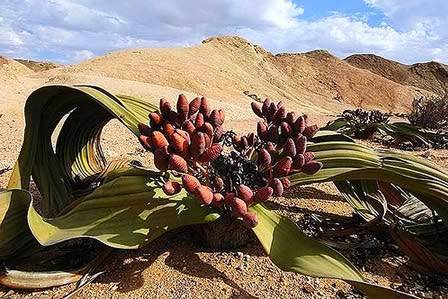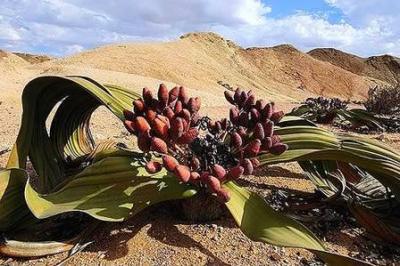The longest-living green leaves can be found in the plant kingdom within parts of the oldest desert in the world, the Namib Desert, known for its extreme dryness, located on the border between southern Angola and northern Namibia. While this desert is not the most suitable place for growing leafy plants, it is home to the Welwitschia, referred to by Africans as "the two leaves that do not die," as it continues to grow with two leaves over its lifetime that lasts for thousands of years. This indicates the possibility of cultivating a more resilient and less thirsty plant. The lifespan of this octopus-like plant is believed to exceed 3,000 years.
In a study recently published in the journal "Nature Communications," researchers unveiled some genetic secrets behind the unique form of this plant species, its longevity, and its remarkable resilience.
**The Big Story**
Regarding the study, the New York Times quoted plant scientist Tao Wan from the Fairy Lake Botanical Garden in Shenzhen, China, stating, “The Welwitschia genome has been around for about 86 million years, and after a cell division error, it completely doubled during a period of prolonged increasing dryness in the region,” noting that “severe stress is often associated with genome duplication.” He added that the plant's acquisition of more genetic material came at a cost, as the fundamental activity of life involves DNA replication, which consumes energy. Additionally, a large portion of the plant's genome consists of "junk," meaning self-repeating DNA sequences called “retrotransposons,” which must be replicated and repaired.
Researchers believe that an "explosion" in the activity of retrotransposons occurred one to two million years ago due to extreme temperatures and that the Welwitschia genome underwent extensive genetic changes leading to the silencing of undesirable DNA sequences through a process known as "DNA methylation." This process, combined with other selective forces, significantly reduced the size and cost of active maintenance for DNA replication, giving the plant "a highly efficient, low-cost genome."
**Genetic Modifications**
Furthermore, the study also found that the plant has other genetic modifications hidden in its leaves. While the plant's leaves grow from its heads, the head of the Welwitschia dies, and the leaves flow from a weak area of the plant known as the "meristematic tissue," providing the plant with new cells.
It is believed that the occurrence of many copies or increased gene activity leads to effective metabolism, cell growth, and resilience under extreme environmental pressures. Commenting on the study, plant biologist Jim Leebens-Mack from the University of Georgia in the United States stated, “When we see that the plant is able to survive in this environment for a long time while maintaining its DNA and proteins, we truly feel that we can find a clue on how to improve agriculture.”




